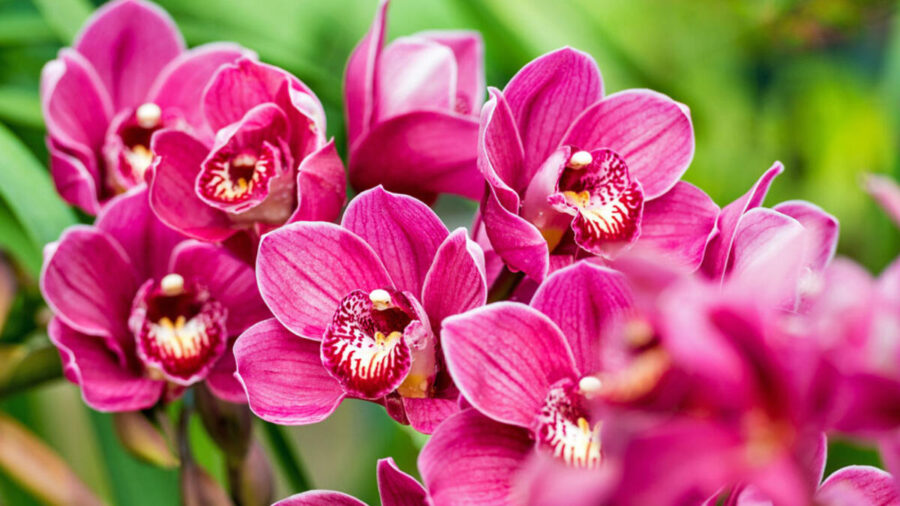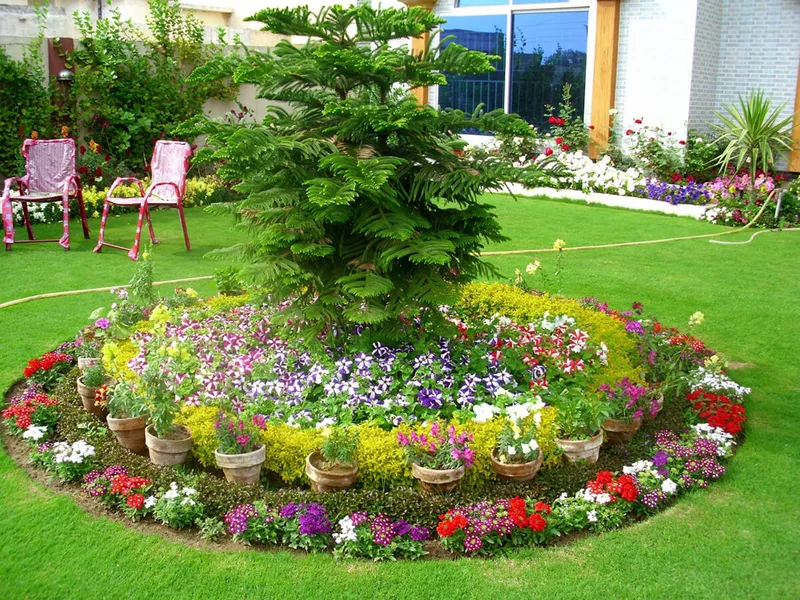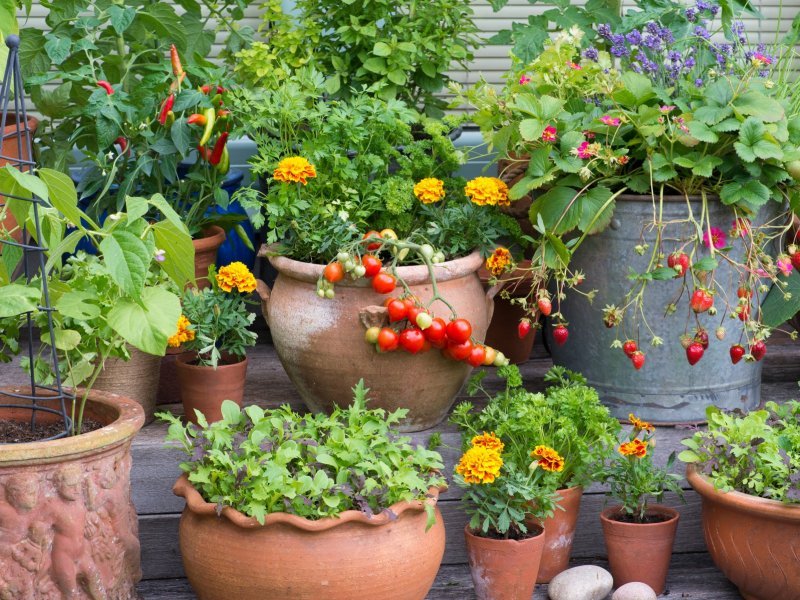The Cymbidium is among the most popular orchids in cultivation. It is often referred to as a beginner’s orchid because it is so difficult to kill. But equally, it is difficult to grow well.
The natural distribution of this genus is from China in the north, across to Japan, throughout the Himalayas, India, down through Thailand, the Malaysian Peninsula and as far south as northern Australia. The habitat is diverse, with plants growing at high altitudes in the Himalayas, tolerant here of cool nights and hot sunny days. There are also tropical rainforest varieties. Other species, such as C. sinensis and C. caniculatum, grow in very dry, arid conditions in Australia, relying on the annual monsoon rain during their growing season. The hard-leaved species, such as C. aloifolium, found in Thailand and other parts of Asia, can stand full blazing sun. They grow as epiphytes on deciduous trees or rocky outcrops.
Due to their habit of growing high in trees, many of these species produce long, pendent flower spikes which, when the plants are grown in cultivation, are tied upright. Other species, such as C. insigne, are terrestrial and grow in long grass among rhododendron bushes. They have thus adapted to produce tall, upright flower spikes. As the habitat for cymbidiums varies considerably, so there is great variation in the shape, size and colour of the blooms.
Miniatures, Compacts and Standards
Cymbidiums are divided into the these three groups. True miniatures will fit into a 10-12 cm (4-5 in) pot with a flower spike about 45 cm (18 in) high. They have pretty, petite flowers arranged along the stem. Standard cymbidiums can grow into very large plants. In huge tubs, they produce magnificent blooms on 120 cm (48 in) spikes. The compart Cymbidium, which has been produced somewhere between the other two, will fit an 18-20 cm (7-8 in) pot and produce spikes 60-70 cm (24-28 in) high, four or five to a plant.
A History of Cultivation
Of all the orchids in cultivation, the Cymbidium has the longest history. By 2000 BC, the Chinese and Japanese were cultivating them around their homes and temples for their perfume. C. ensifolium, one of the most strongly scented cymbidiums, comes from southern China and was highly prized. The Chinese made no attempt to hybridize from this species but cultivated it just for its perfume. The Japanese have always grown a wide range of miniature Cymbidium species, keeping them in very decorative earthenware pots.
Modern European interest in this genus started when the plants were first introduced into England. They became popular for the large conservatories of the Victorians, but it was not until the end of the 19th century that hybridization started. As a result, we can enjoy an immense range of colours, shapes and sizes unimagined by the early growers.
Hybridization
Surprisingly, only a few species have appeared in our modern hybrids and there are many that have never been bred from at all. As few as five or six species play an important part and only ten or twelve are likely to appear in the background of the hybrids that you will see at any big Cymbidium show. This is because the majority have small, insignificant flowers.
By the 1950s, hybridization had continued at a pace but most breeding had been confined to a limited number of species. With the season, starting in Europe around February, peaking in March or April and finishing in May, anyone with early cymbidiums that bloomed in January was extremely lucky. Flowering before Christmas was extremely rare.
Selective breeding has now brought the early cymbidiums so far forward that they start blooming in )uly and August, and any collector, choosing his plants carefully, can now have cymbidiums in bloom all year round. Most of the hybridizing has been done with the high-altitude species from the Himalayas, with the result that they can be grown anywhere in the world where the temperature is not too high.
Providing the Right Conditions
In those parts of the world where the temperature does not drop below 10°C (50°F), cymbidiums can easily be accommodated in shade houses, which provide them with the ideal broken light that they enjoy, or in a greenhouse. They will flourish in the latter, producing many long-lasting flowers. When the plants are in bloom, they can be successfully brought into the home. Keep in a cool room in good light, away from a direct source of heat. They should be returned to the greenhouse straight after flowering.
In colder climates, such as Europe and the eastern seaboard of the United States, cymbidiums must be grown in heated greenhouses where the temperature should be maintained at least at 10°C (50°F) on the coldest of winter nights, with a natural rise during the day. These cool nights are essential for flowering.
Some growers prefer to place their cymbidiums out of doors during the frost-free months. Place in a bright, airy position with some broken shade to protect them from the rays of the hot summer sun. Do not put them in a dark corner or behind a thick hedge where no light can reach them. A raised bench is preferable to allow air movement around the plant and to make it difficult for unwanted pests to make their home in the pot.
Cymbidiums do not make ideal houseplants in a centrally heated room as the temperature is usually too high at night and the light too poor.









